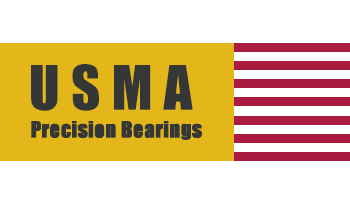NEWS
DEVELOP BY TECHNOLOGY,SURVIVE BY QUALITY
U.S. Bearing Manufacturers Navigate Policy Shifts and Export Challenges in 2025
Views: 2 Author: Site Editor Publish Time: 2025-05-09 Origin: Site











U.S. Bearing Manufacturers Navigate Policy Shifts and Export Challenges in 2025
May 9, 2025
As the U.S. intensifies its tariff policies to revive domestic manufacturing, American bearing factories face a dual reality: short-term protectionism and long-term strategic recalibration. While the administration’s 145% "low comprehensive tariff" on Chinese goods aims to shield domestic industries, manufacturers warn of unintended consequences, including supply chain disruptions and global market retaliatio
1. Policy Pressures: Tariffs and Domestic Production Realities
The U.S. government’s renewed focus on tariffs, including the recent anti-dumping and countervailing duty (AD/CVD) reviews on Chinese carbon steel wire rods, seeks to protect domestic steel and bearing industries.However, economists argue that tariffs alone cannot reverse decades of offshoring driven by corporate cost-cutting and automation. Former Treasury official notes that tariffs raise input costs for U.S. manufacturers, eroding export competitiveness and consumer affordability
2. Export Strategies: Diversification Amid Global Tensions
Facing reduced demand in traditional markets like China (where U.S. bearing exports now account for less than 1% of some Chinese firms’ revenue).American manufacturers are pivoting to Europe and emerging economies. For instance, Texas-based Co. has expanded partnerships in India and Southeast Asia, leveraging regional demand for heavy machinery bearings in infrastructure projects.Yet, challenges persist. Chinese competitors, utilizing third-country transshipment via Malaysia and Vietnam, circumvent U.S. tariffs, flooding global markets with low-cost alternatives.“Transshipment undermines the tariff’s intent,” said a Michigan plant manager. “We’re competing against the same Chinese products, just relabeled.”
3. Innovation and Automation: The Double-Edged Sword
To offset labor costs and tariff pressures, U.S. factories are accelerating automation. Smart bearings embedded with IoT sensors, developed by firms like U.S. division, now dominate high-value sectors like aerospace and electric vehicles (EVs). These innovations align with the administration’s push for green energy and advanced manufacturing.However, automation further reduces reliance on human labor—contradicting political promises of job creation. “Every robot we install replaces three jobs,” admitted an Ohio plant executive. “Politicians want us to ‘reshore,’ but they ignore the reality: modern manufacturing thrives on efficiency, not headcount.”
Outlook: Balancing Protectionism and Globalization
While tariffs offer temporary relief, U.S. bearing manufacturers emphasize the need for coherent industrial policies. “Subsidies for R&D and workforce training would do more than tariffs,” argued a Chicago industry lobbyist. Others urge multilateral trade reforms to curb transshipment abuses
Sources: Xinhua, industry reports, and corporate disclosures
This article integrates U.S. policy impacts, export adaptations, and technological shifts, offering a nuanced perspective from American bearing manufacturers navigating 2025’s turbulent trade landscape.

